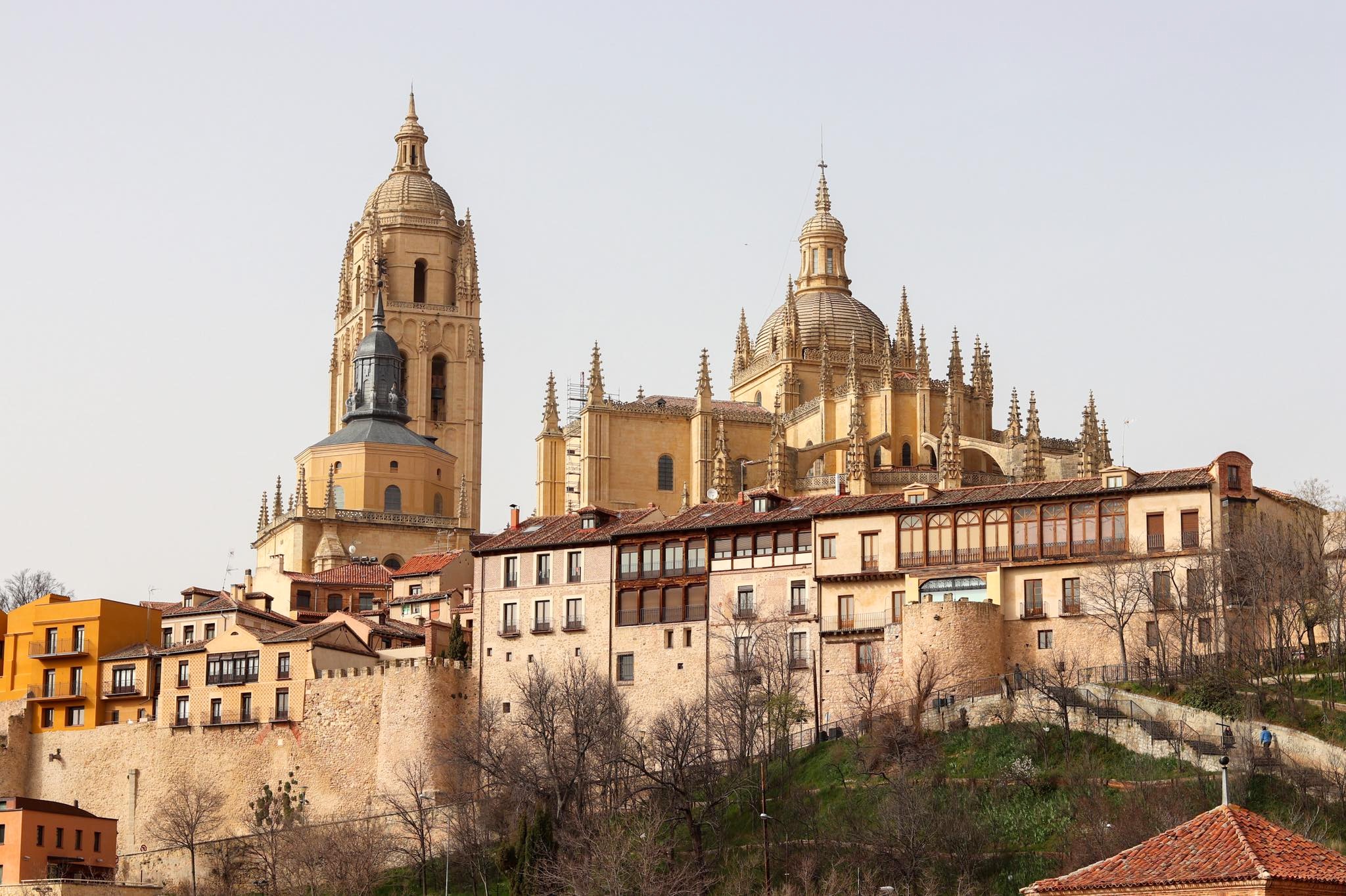Ever wondered what it’s like to hit the open road and travel in a camper van? I know I did, until we booked the California Ocean van with VanBreak Malaga. It was an amazing experience discovering the Andalusian coastline and we enjoyed it so much that we wanted to try it again. This time we opted to visit the centre of Spain and we focused on places near Madrid instead of the southern coast, like Toledo and Segovia.
If you’re planning to explore Spain in a camper van or motorhome outside of the summer months, the City Car Burstner is a great option. This motorhome is much larger and more comfortable to travel in, which was ideal for our 5 day road trip from Malaga to Toledo and Segovia. Since we did our trip in February, we were very thankful to have an indoor bathroom and overnight heating. Here’s some more practical information about renting a motorhome in Spain as well as what to see in Toledo and Segovia.
- Renting a motorhome in Spain
- A 5 day road trip to Toledo and Segovia
- Final thoughts about planning a Toledo and Segovia road trip
Renting a motorhome in Spain

Van reservation
To travel to Toledo and Segovia we booked our motorhome with VanBreak Malaga who are located in Alhaurin de la Torre. We had no problems contacting the team during the trip as they’re always available via text. Currently, the City Cars are manual only, so keep this in mind when you’re booking, otherwise you could end up like us with one person doing all of the driving.
Price
The price depends on the type of camper van or motorhome you rent as well as what season you rent it in. For us, renting the City Car Burstner in the off-season for 5 days worked out to approximately €95 per day. Adding insurance cost €75 for the whole trip. There are also add-on options such as sleeping bags, paddle boards, and camping chairs (the paddle boards are perfect if you’re planning on driving along the Costa del Sol and hitting up some beaches).
Picking up the motorhome
The pickup point is located next to a petrol station in Alhaurin de la Torre, a 15 minute drive from Malaga’s airport. When we arrived we were shown how to use all of the equipment in the van and they answered any questions we had. It was a very easy pickup process and we were on the road in no time which we were grateful for because driving to Toledo and Segovia is quite a distance from Malaga.
Where to stay overnight in a motorhome in Spain
There are plenty of places that are safe to spend the night across Spain. We used the app “park4night”, which uses your current location or your destination and gives you other people’s recommendations, usually with photos too. Overall, it’s a great app for planning a road trip in Spain with and we found great parking spaces in both Toledo and Segovia.
Setting off
We had a destination in mind but figured out where to park for the night on the long drive up to Toledo. I would recommend driving the van for a little bit before getting onto the main roads. It may seem like a daunting task having to drive a larger vehicle, but once you get the hang of it you’ll love it. Make sure you secure all your bags before setting off too.
A 5 day road trip to Toledo and Segovia
Day 1
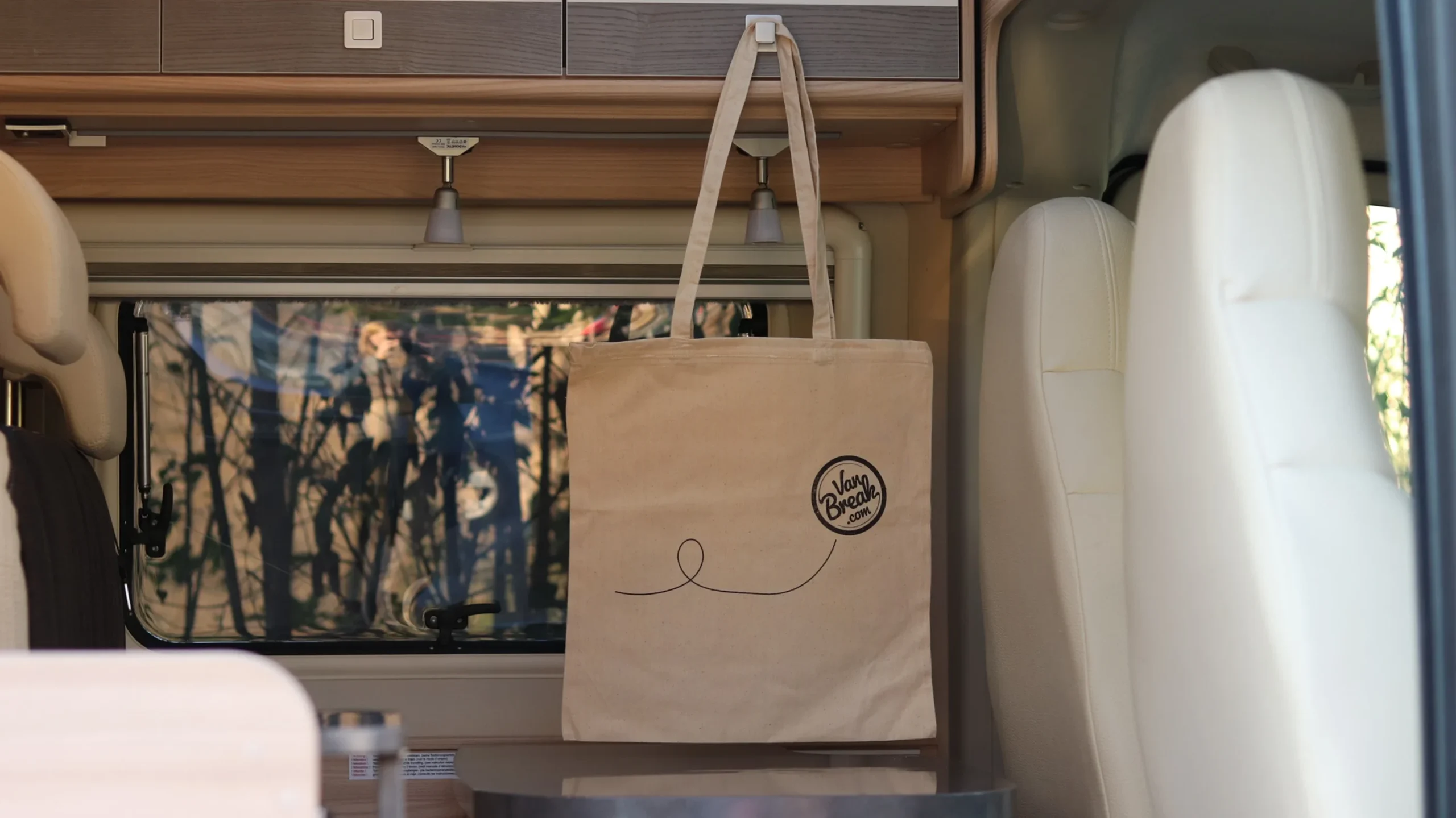
Just before 9AM we headed to the meeting point and were then given information about the van’s equipment. We made the bed before starting our road trip so we didn’t need to worry about it later. Getting from Malaga to Toledo is about a 4.5 hour drive (slightly shorter than Malaga to Madrid) which is quite long non-stop, so we took a short break at the halfway point to refuel and get some fresh air.

We found a great parking spot in Toledo, just outside of the historic centre and right next to the Puente de San Martin – 1 of 2 medieval bridges in the old town. A footbridge connected our parking area with the old town which was perfect. Once we parked up, we headed into Toledo for a beautiful evening walk through the streets, past numerous bustling tapas spots, and stopped at an amazing restaurant that served freshly made croquettes.
The van comes equipped with multiple electrical plugs and USB ports, so we were able to charge our phones and relax watching Netflix. We had rented a couple of sleeping bags for the trip as well, so we put those inside the bedding to make a comfortable and cozy quilt. Thankfully the heating will stay on overnight, because Toledo can be a little chilly!
Day 2
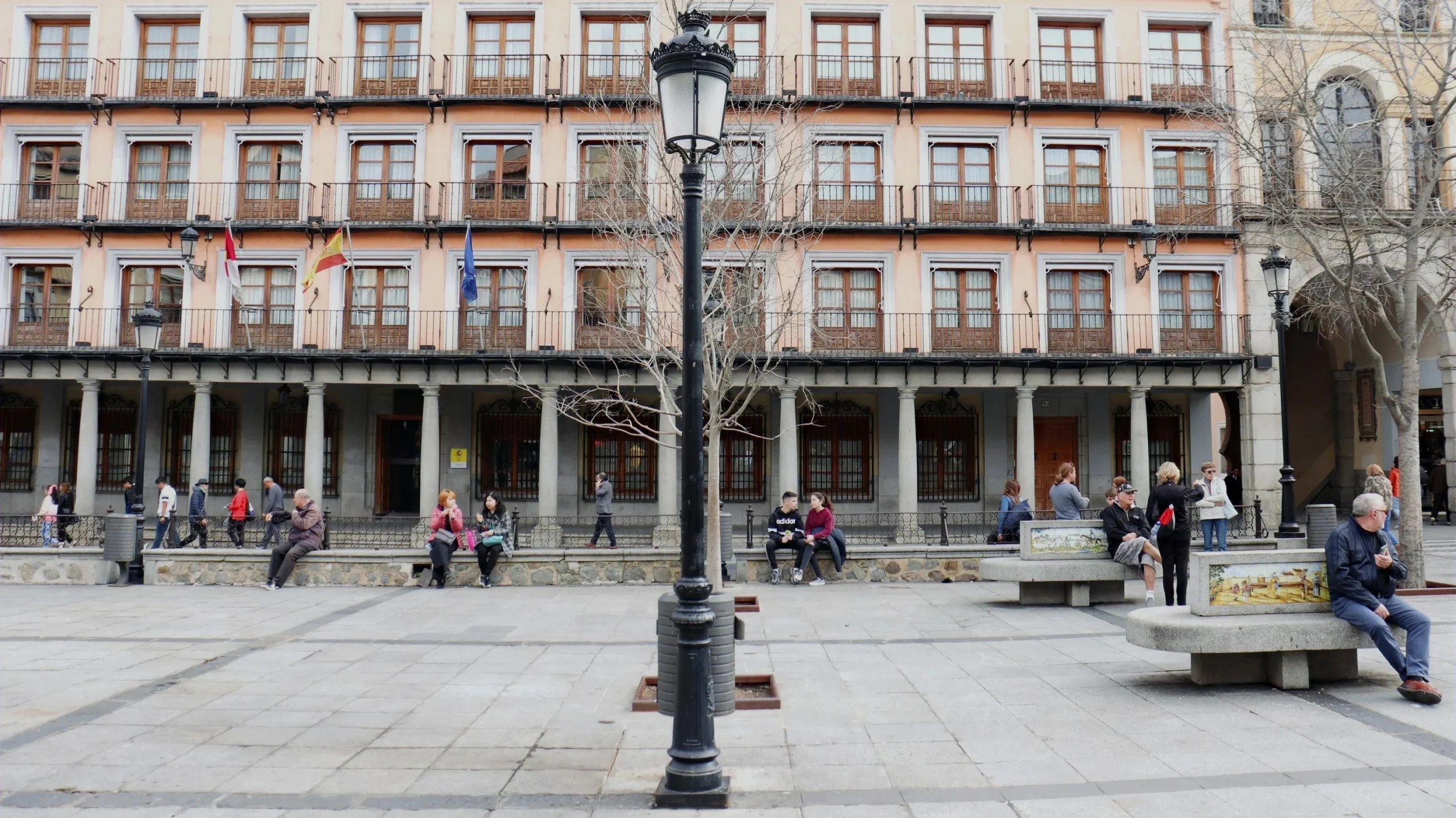
If you’re wondering what to do in Toledo, don’t worry, there’s lots of options. Our first stop was Zocodover, the main plaza. It’s usually packed full of people on day trips from Madrid, but since it was the off-season it wasn’t too bad. For those of your wondering, Toledo to Madrid takes less than an hour driving.

After a little walk through the medieval streets, and a stop to buy some souvenirs, we came across the Puerta del Sol. This 14th century city gate gets its name from the sun and moon that used to be painted on it. It’s a must-see in Toledo and a great spot to take photos.
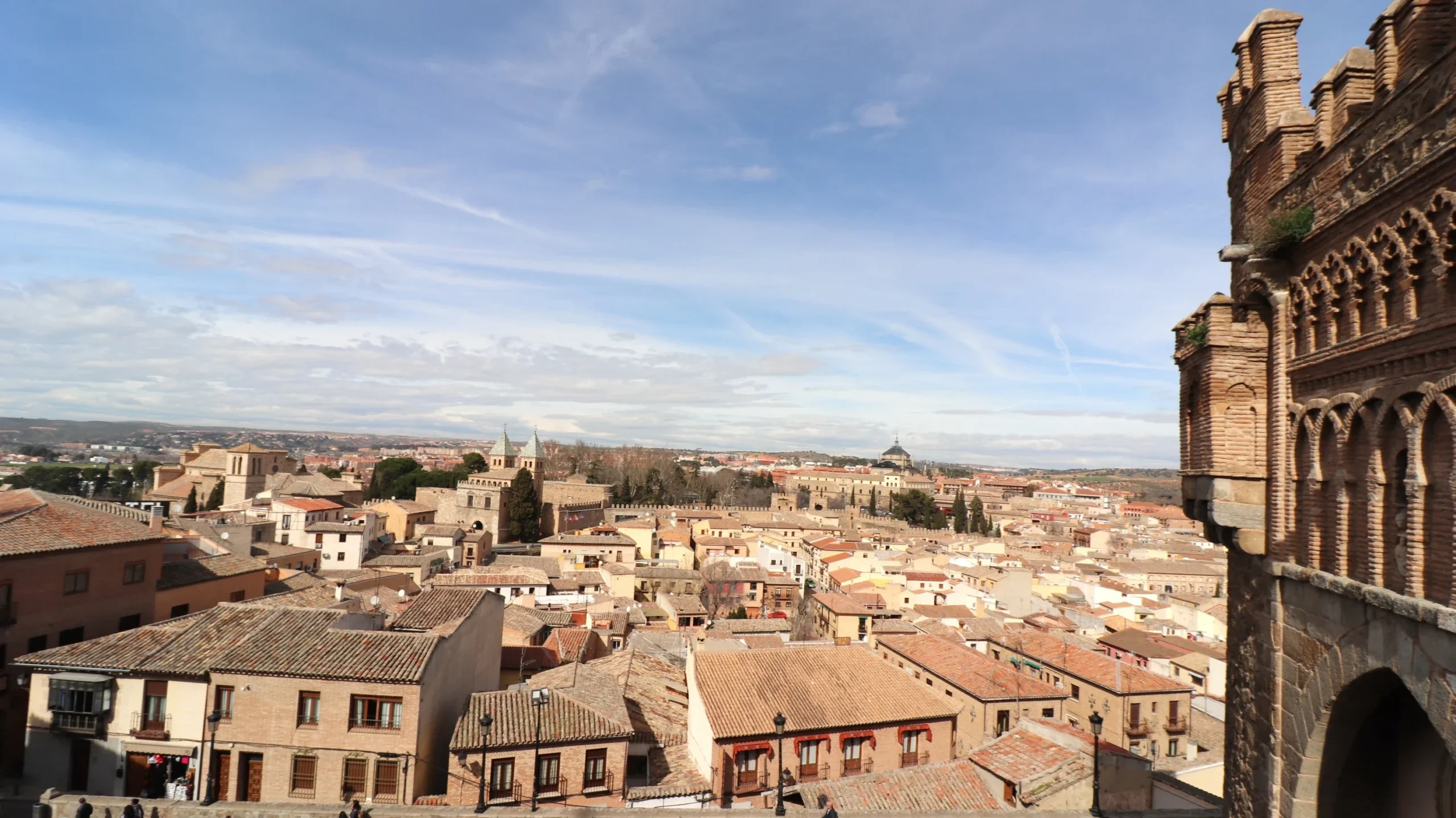
Just next to the gate is the very pretty Mezquita del Cristo de la Luz, 1 of 10 mosques that existed in Toledo during the Moorish period. It’s a very small building inside but there is a gorgeous view of the city from the gardens. We purchased the Toledo Tourist Bracelet from the ticket counter here, which is a great way to save money as it gives you entry into all 7 of the main churches and it’s valid for however long you’re in the city.

A short walk down the hill will bring you to Puerta de Bisagra Nueva, a 16th century gate that became the main entrance to the city upon its completion. It sits on an island in the middle of the road, so be careful trying to run across to it.
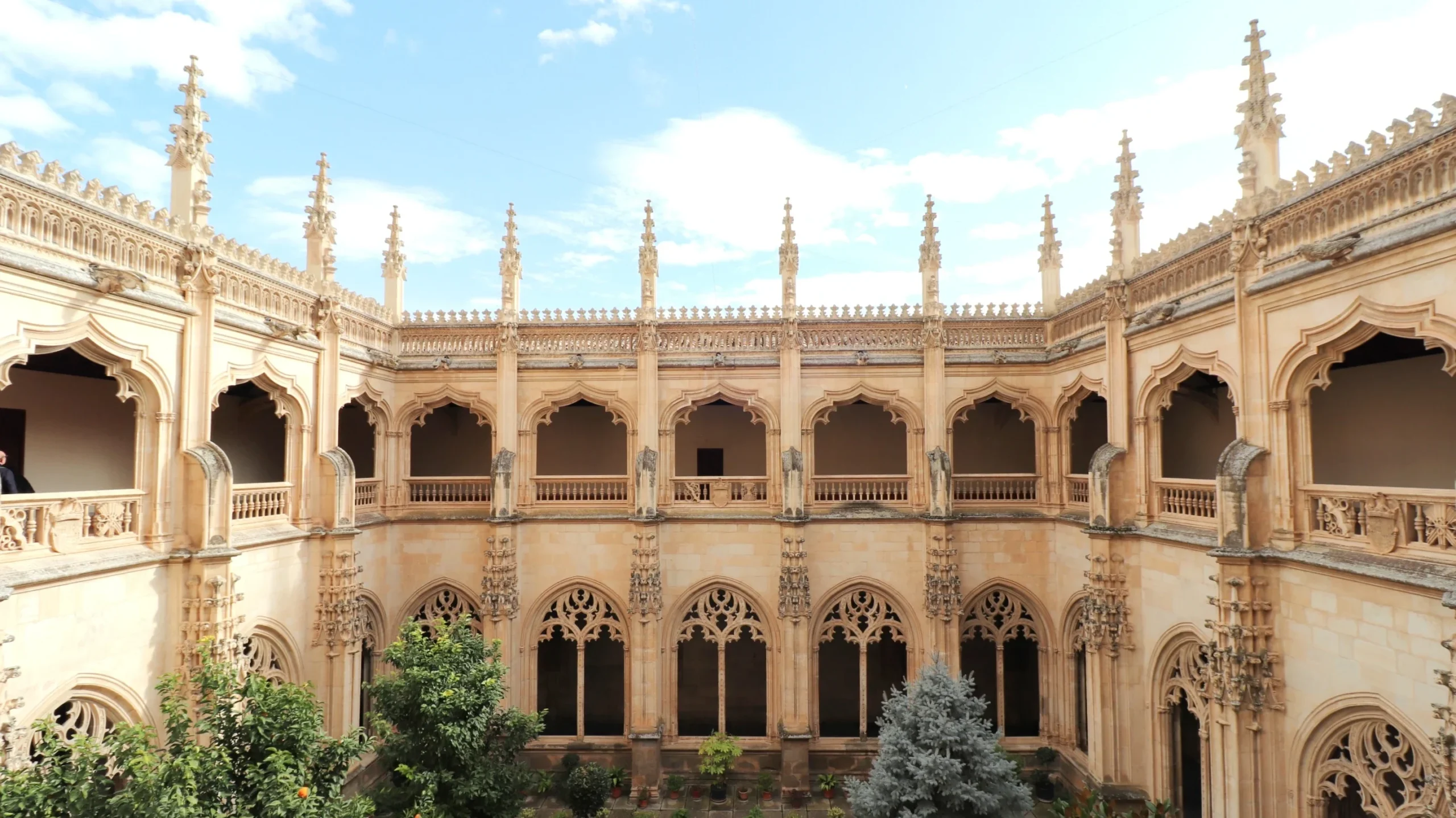
You should take full advantage of your tourist card and head to Monasterio de San Juan de los Reyes next. If you’re short on time and don’t think you’ll be able to see all 7 locations that are included with the bracelet, I would 100% recommend going here above everything else. It was built in 1504 under the orders of Ferdinand and Isabella as a show of their faith, and was meant to be their final resting place. They ended up in Seville however, which is another beautiful place to visit in Spain.
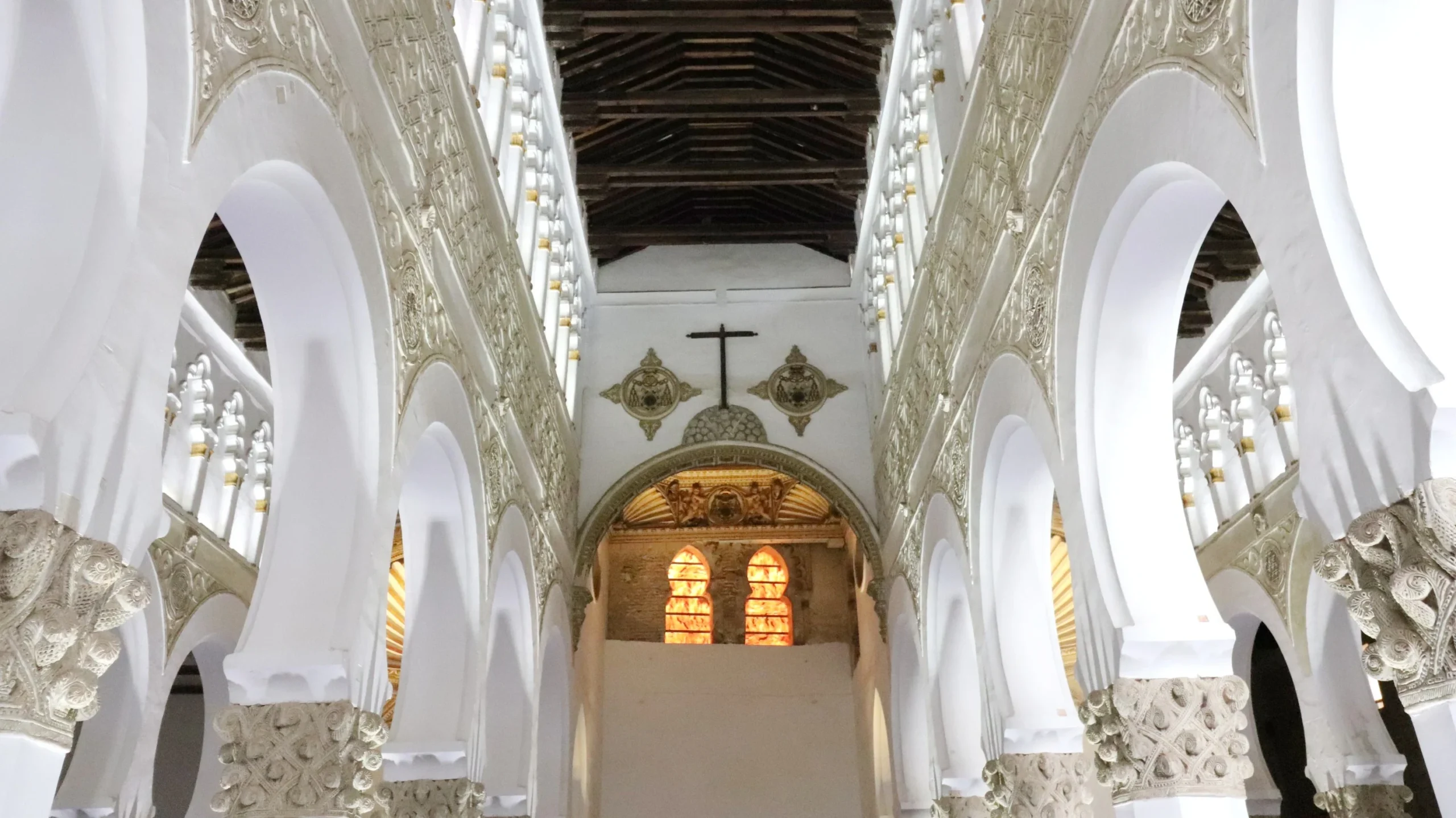
The monastery sits in Toledo’s Jewish quarter, which has a very rich heritage. There are a lot of shops and cafes in this area, and it’s worth a walk around. A 5 minute walk from the monastery is the Sinagoga de Santa María La Blanca which is included with the bracelet. This 12th century synagogue is now a museum but it’s famous for it’s blindingly white interior and Moorish arches. It’s also considered to be the oldest synagogue in Europe still standing.
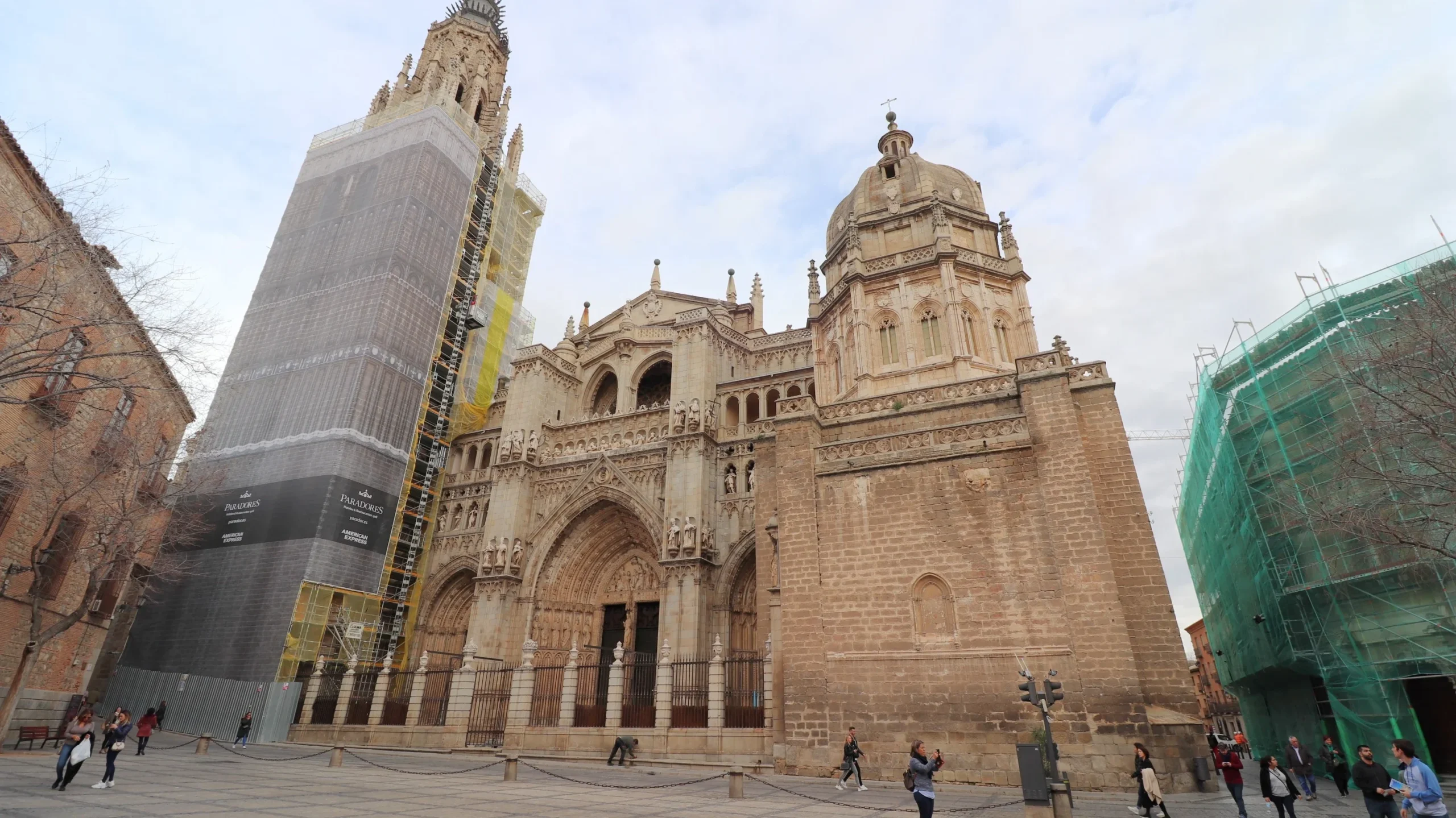
A little stroll through the Jewish quarter will bring you to Toledo Cathedral, which was built in the 13th century. It ranks among the top 10 cathedrals in the whole of Spain, and even with the scaffolding it’s a stunning piece of Gothic architecture.
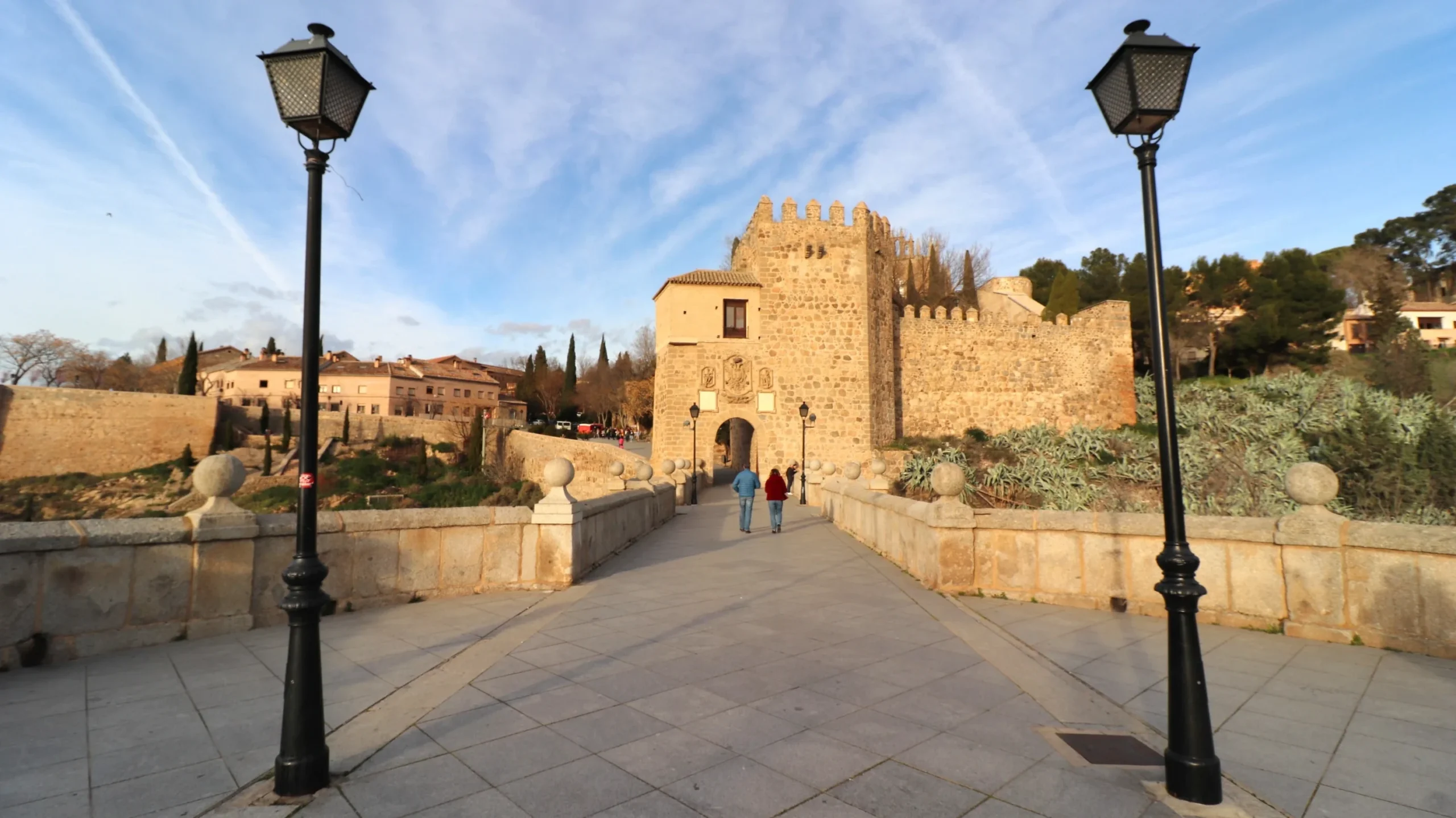
Near the cathedral is a cafe called El Cafe de las Monjas that sells baked goods made by nuns, and the money goes back to the convent. There are small nun dolls in the window too doing various baking tasks so it’s easy to find. Don’t forget to walk along the Puente de San Martin at sunset. This medieval bridge crosses the river Tagus and was opened in 1380. There are some beautiful views of the river from here as well as a different angle of Toledo from below.
Day 3

We made sure to wake up early for our last few hours in Toledo, so we could set off for Segovia at a reasonable time. If you’re looking for a good place for breakfast, there are lots of them around the main plaza area that have breakfast deals that are very cheap. Before leaving Toledo, don’t forget to visit Puente de Alcantara which is the view you see on postcards and photos of Toledo. From the bridge, you’re able to view the Castle of San Servando but it’s now a hostel so don’t waste your time walking up the enormous hill to it.

Just below the bridge is a beautiful walking path which will give you views of the castle and the old town from below. There was hardly anyone there when we went for a walk, and it’s a very peaceful setting so if you have some free time, definitely give this a go.

We started the drive between Toledo and Segovia just before noon. It takes around 1.5 hours to get there from Toledo, and it’s a pretty straight forward road too. Segovia to Madrid takes just over an hour by car too, which is why it’s one of the most popular day trips in Spain.
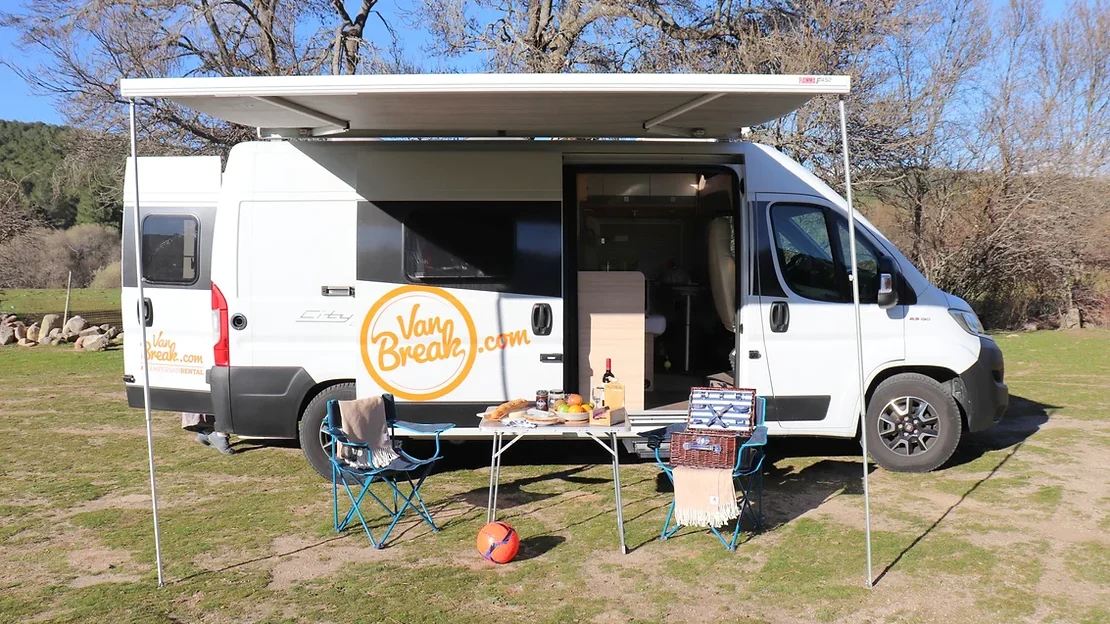
We took a little detour to a lake that was just off the motorway in Guadarrama to make lunch and take a shower. The area we parked at was a campsite, but it was deserted since it was February, apart from a herd of cows grazing in the grass who quickly ran away.
We stayed at our lunch spot longer than we had intended, so when we finally reached Segovia the sun had almost disappeared. Our parking spot was ideal, with a view of the cathedral in the background. It only took 10 minutes to reach the town centre as well.
Day 4
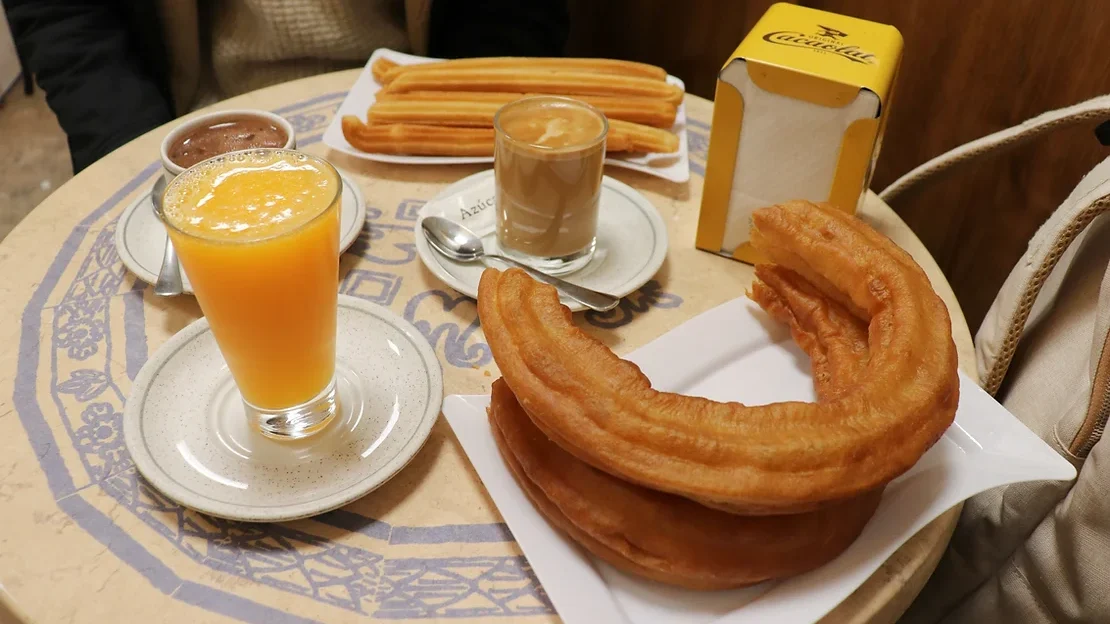
Is there any better way to start the day than with churros? I don’t think so. Instead of making breakfast in the motorhome, we read about a traditional churro place so we decided to give that a try. They had two types of churros, and one of them was absolutely enormous. Both Toledo and Segovia have lots of options when it comes to churros.
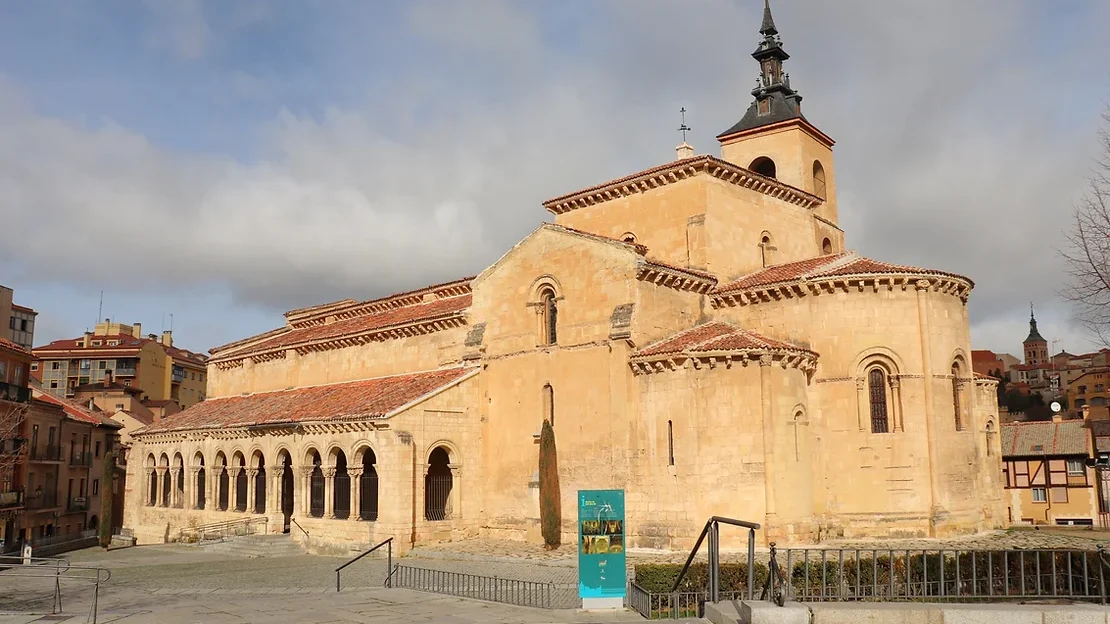
A short walk through the Jewish quarter will bring you to Iglesia de San Millan. It’s a very impressive 12th century church with gorgeous medieval artworks inside. This church has to be on your list of things to see in Segovia.
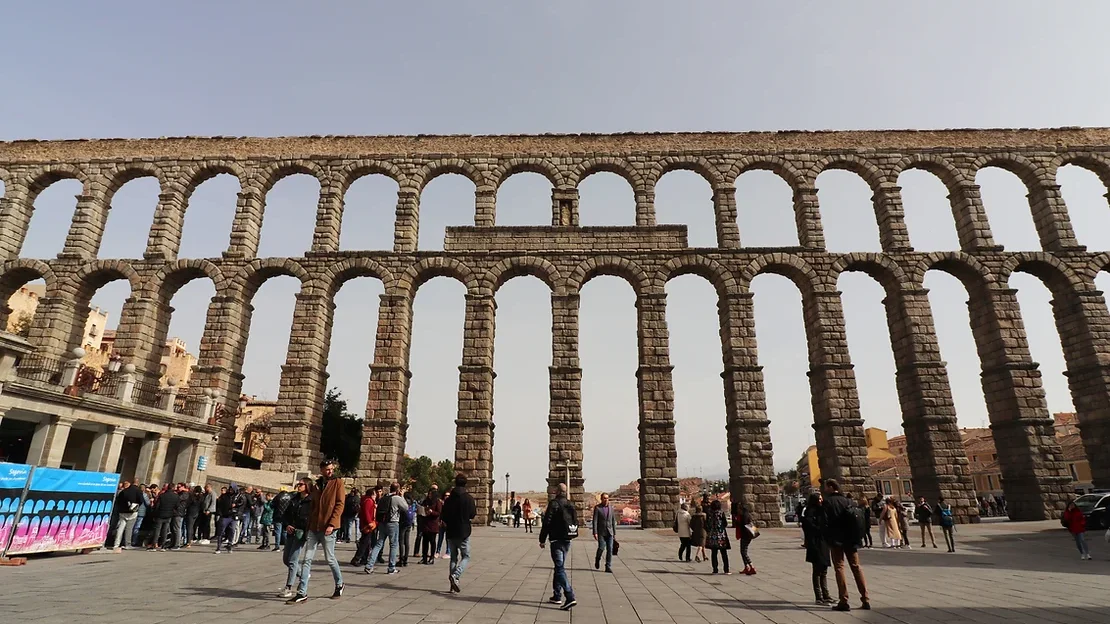
The Aqueduct of Segovia is the city’s main attraction. It was built in the second half of the 1st century by the Romans and is still functional today. It may look impressive in the photos, but I promise it’s more impressive in person. It sits in the Plaza del Azoguejo and there is a great viewing platform to the left of it for a birds-eye view. Segovia’s cultural heritage becomes more and more prominent as you walk through its medieval streets, and it’s an ideal destination for history lovers.

After the aqueduct, we made our way towards the cathedral. The city itself is quite small, and most of the points of interest in Segovia are more or less in a straight line from each other, making it very easy to navigate. Before the cathedral though, we came out at Plaza de Medina del Campo, which is where the Iglesia de San Martín sits.

Next stop: Segovia Cathedral! This is another famous landmark in the city that was built in the 16th century and dedicated to the Virgin Mary. It sits at the far end of Plaza Mayor, the main square in Segovia. If you’re planning a trip to Spain, especially around the Madrid area, you do not want to miss this cathedral.

Running along the outside of the plaza is the historic Jewish quarter. There are lots of restaurants in this area and many come highly recommended, so if you have time go and explore it. Many of the Segovia day trips include this area of the city because of its rich, although tumultuous, history.

The Puerta de San Andres is one of the entrances to the Jewish quarter but you might miss it depending which way you’re coming from. The gate forms part of Segovia’s medieval fortifications and is very impressive and well preserved. Make sure you watch out for the cars if you plan to stand in the middle of the road for a photo though!
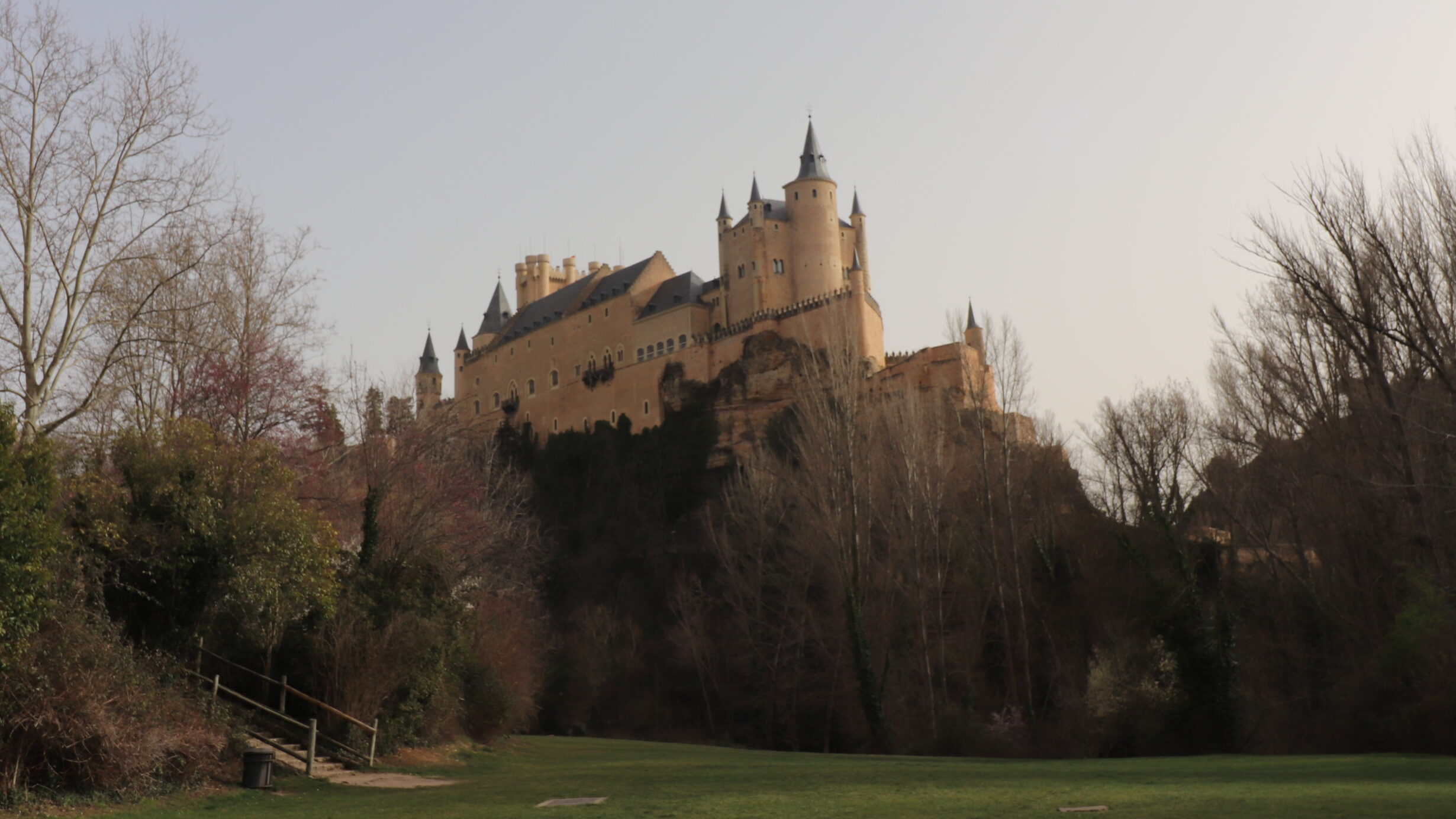
The Alcázar de Segovia is one of the most famous castles in Spain, perhaps in the whole of Europe. This medieval castle has played an important role throughout Spanish history, and was the favourite residence of Ferdinand and Isabella. It’s also said to be the inspiration behind Cinderella’s castle.
We didn’t have time to go inside the castle but the view from the outside was incredible. We drove the van to Mirador de la Pradera de San Marcos, which is a view point from below just outside of the city centre.
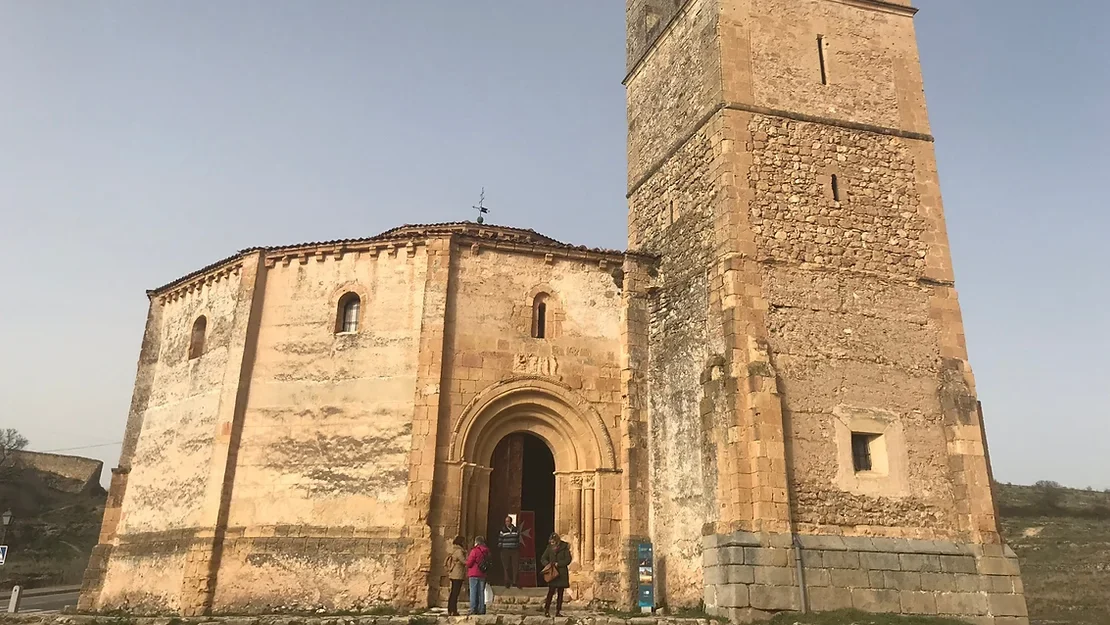
We decided to start our journey from Segovia to Malaga after seeing the castle, so that we didn’t have an extremely long journey the next day. But on our way out we stopped for a quick photo of the Iglesia de la Vera Cruz, a 13th century church built by the Knights Templar that sits on a hill facing the castle.
After a bit of research following our trip to Toledo and Segovia, we decided to drive to Consuegra to spend the night, which is just over 2 hours from Segovia.
Day 5

We woke up relatively early on our final day, had breakfast, and then made our way uphill to the Consuegra Windmills. If you haven’t heard of this place before, I’m sure you’ve seen photos as its one of the most iconic landscapes in the whole of Spain. Again, there are day tours to Consuegra if you don’t have a car and are staying in the Madrid area.
The 12 windmills sit atop the Cerro Calderico mountain, and look out over the plains of Castilla-La Mancha. It’s said that they are the inspiration behind the famous 17th century novel Don Quixote. At the top of the hill we stopped at the first parking area we came to and walked a few minutes to check out the first couple of windmills.
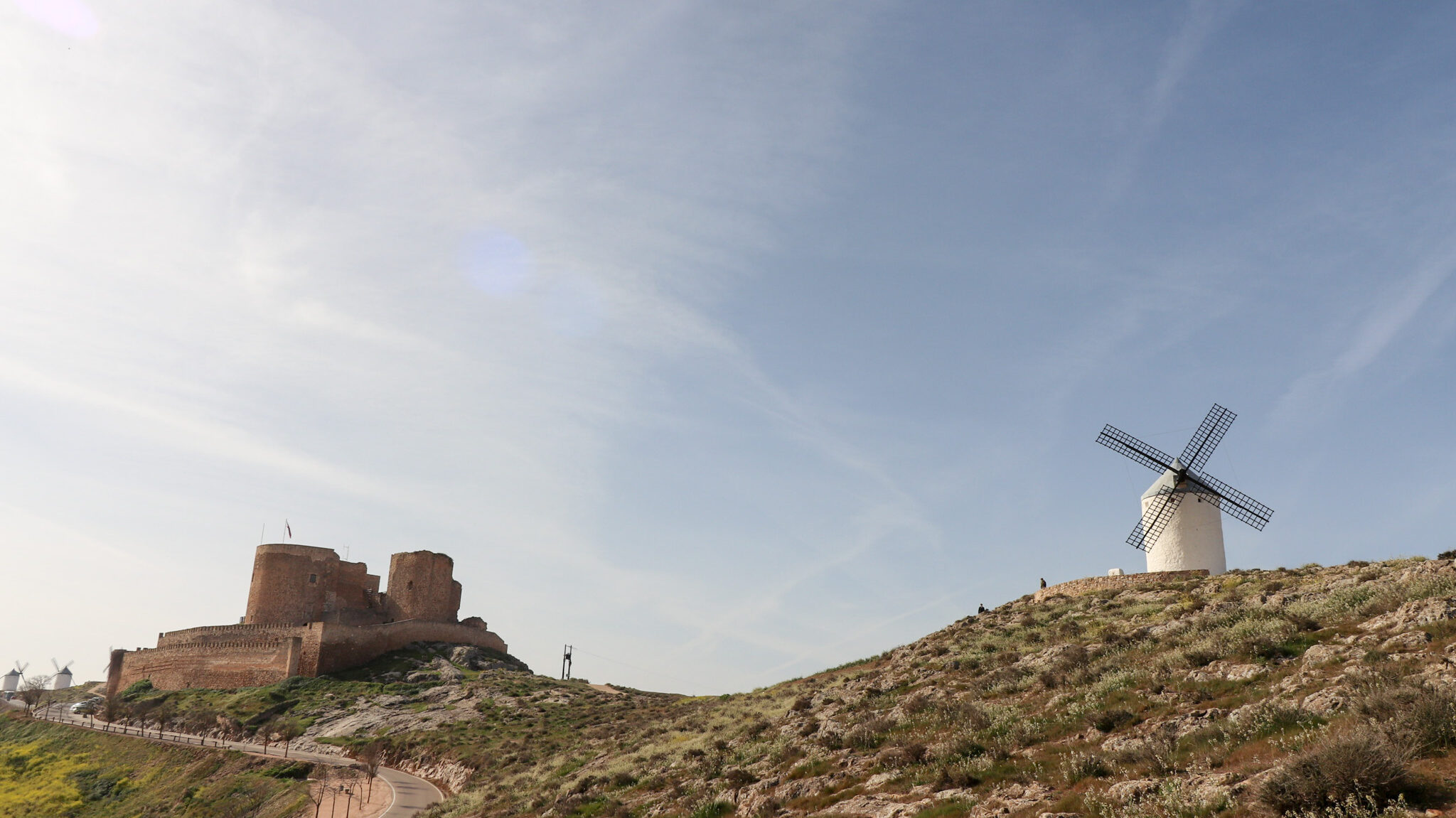
Each of the windmills has their own name based on a character from the novel, and some are still in working order. There is a souvenir shop located in one of the windmills and a cafe in another which seemed to be very popular. You should also check out the castle located a short walk from the windmills.
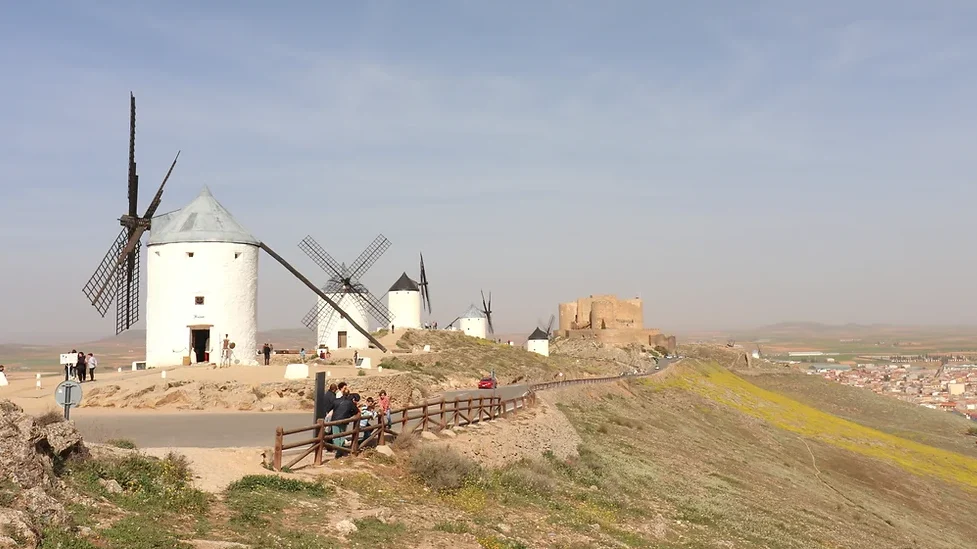
When we visited the Consuegra Windmills it was still early in the morning, so there weren’t too many people around. We were able to stop the van in the middle of the parking area without any problems. If you’re visiting I would recommend going early because when we were leaving there were a lot of vehicles arriving. Consuegra is a popular day trip option from Madrid, just like Toledo and Segovia are.
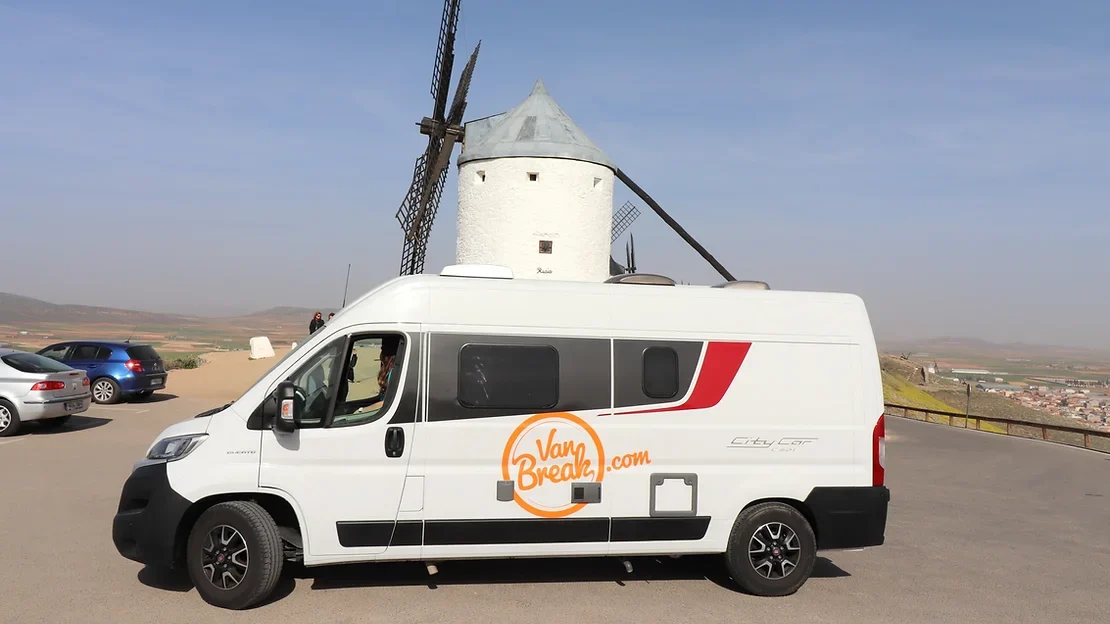
After our visit to the windmills, we started our drive back down to Malaga. To break it up, we stopped at the halfway point to cook some lunch with the food we hadn’t eaten yet. We also took this time to clean the inside of the van and pack everything back into our bags so it was easier for us to drop the van off.

When we arrived back to Malaga we made sure to empty the waste container and the waste water at the petrol station, fill up the fuel and water tank, and clean the outside of the van. Drop-off was very easy too. Usually someone is there to meet you, but because we returned quite late we were told to drop the keys in a locked key box nearby.
Final thoughts about planning a Toledo and Segovia road trip
We had an amazing time driving the City Car Burstner which was fully equipped for the colder weather. The van was very easy to drive and incredibly comfortable, with front seats that turned around to complete the living area. If you want to explore all that Toledo and Segovia has to offer but don’t want to be confined to hotel rooms, this motorhome is definitely for you.
Don’t forget to check out my blog posts covering things to do in Malaga and Granada if you’re thinking of visiting either of these beautiful cities in Andalusia. Remember to follow me on Instagram too for some more travel tips and get in touch if you have any questions about visiting Toledo and Segovia.
This post may contain affiliate links, which means I may earn a commission from the discount codes used or when a link/ad is clicked. All purchases made will come at no extra cost to you, and I only include products and services that I would personally recommend.
Pin this blog post for later!



